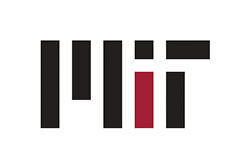
Opinion by Professor David A. Hensher
The University of Sydney
The Transport for NSW Future Transport Summit held on April 18-19 2016 looked to the future of transport. In the context of autonomous vehicles, big data analytics, internet of things, disruptive technologies and customer service in the digital age, there was much formal and informal discussion on the likely new context in which public transport services might be provided, including driverless vehicles of all types (cars, taxis, buses, trains) in which mobility services come to the fore with no need for individuals to own a car, with regulatory reform (and contracts) that supports a customer-focussed mobility model in which point to point transport can be provided via smart technology.
The opportunities for public transport to match customer expectation under a mobility service model are exciting but also disruptive in terms of current practices centred around mode-specific contracts, protected service areas and under-utilised capacity (it being well known how often buses move ‘fresh air’ plus the driver and no passengers). Has the time arrived for the digital age to provide the much needed technological spur for the take off into the new mobility services era? In NSW this is clearly influenced by the Uber experience and the legalisation of their taxi-like services with an emphasis on high quality point to point customer service bookable through smart technology. ‘Uberisation’ of public transport might now be the catch cry to get us all thinking about future states. (The word Uber has Germantic heritage and refers to ‘being a superlative example of its kind or class’).
So where might we start? The first point is to recognise that the existing model for delivering public transport services (especially the way contracts are designed) may in itself be a constraint on the ability of public transport to fulfil a more useful role in point to point mobility services. With such a large amount of capacity provided and often excess under-utilisation, but a recognition that existing assets may not be the best fit in delivering point to point mobility services (which might benefit by a mix of vehicle types –including cars, small buses, large buses etc.), if there is a desire by government to relax the modal regulatory regime to accommodate mixed-mode opportunities offered by one or more service providers, then we are very likely see a huge change in the services available to customers. The recent move to a multimodal public transport contract offer in Newcastle (NSW) involving buses and trains is a good sign of the willingness of the regulatory setting to accommodate such a plan.
Imagine a metropolitan world in which we no longer have geographic contract areas for bus services, but a model in which operators run their business in a way that gives them the flexibility to provide (if they so wish) traditional timetabled services along specific routes (with designated bus stops), but also a bookable system using smart technology that provides point to point services, be they from home to a rail station, or even longer distances from home to work (the latter is like the old subscription bus service in some countries before the digital booking era). Operators will use this digital platform to compete for business and develop many ways to incentivise users to stay with them (e.g., loyalty programs, fare discounts for multi-riding, discounts on products from various stores etc.).
What is exciting is that there are many smart bus operators out there and they can be part of this journey, make profits and taking pressure off of the funds currently provided by government (or the tax payer), resulting in significant improvement in value for money to the tax payer, something that has been somewhat alien for many years in this very fragmented and protected sector. While operators are encouraged to be innovative and to grow patronage, the contracting regime often has limited incentives to do so, which together with the difficulties in attracting patronage in a market often dominated by the car (which is seen as the preferred point to point mobility mode), bus operators struggle to build patronage even under incentives. Indeed these new service models are expected to make the need to use a car owned by a traveller significantly reduced, even if the substitute is a point to point serviced car operated by the smart multimodal transport mobility provider.
The entrepreneurial zeal may not be something to whet the appetites of all existing bus operators, but many will relish the opportunity while others might just decide to call it a day. New service providers are likely to enter the new mobility space. The same arguments might be put for rail; however the focus is likely to be on rail operators moving into the point to point space as a way of gaining patrons for the rail network through a single point to point service offered by the refreshed multimodal rail enterprise. Whether the rail enterprise does this through a partnership with other mobility providers or themselves should be entirely up to them.












